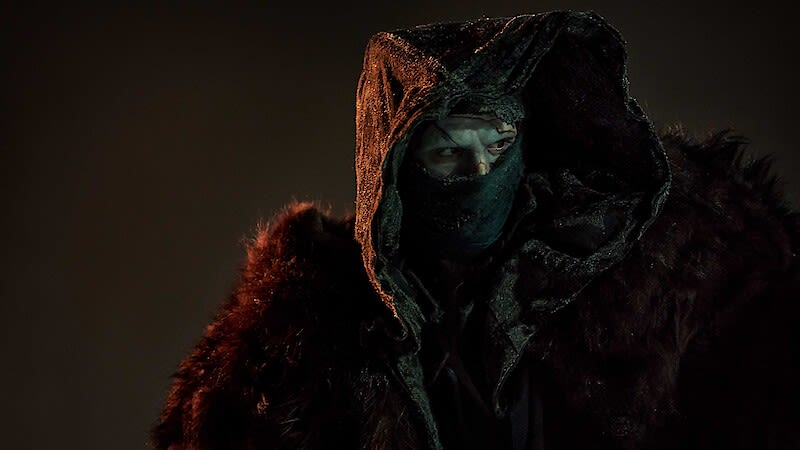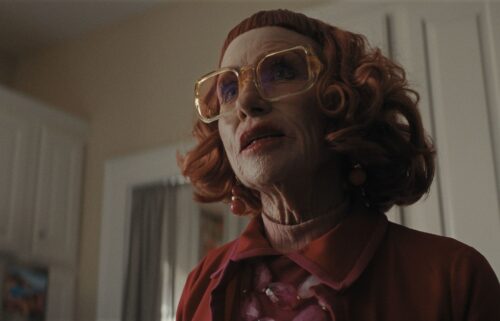Jacob Elordi is Frankenstein’s monster. But not as you know it

Does the monster's new look reveal something about our modern age? A scene from the new "Frankenstein" film directed by Guillermo del Toro.
By Leah Dolan, CNN
(CNN) — This fall Frankenstein’s monster rises once more, summoned this time by Mexican film director Guillermo del Toro.
But green-skinned, bolt-necked and flat-skulled he is not. In fact, the monster — who first entered the cultural conversation over 200 years ago thanks to Mary Shelley’s gothic science-fiction novel — has undergone something of a facelift. Played by Hollywood heartthrob Jacob Elordi, the creature (who in Shelley’s writing was abandoned by humanity for its immense and unbearable “physical deformity”) appears on-screen with sculpted cheekbones and pouty lips. Even with his suture-less scars, he is kind of hot.
His skin is ivory white, inspired by the alabaster statues carved by Old Masters, with joining wounds that mimic flattering contour-lines. Elordi’s big brown puppy-dog eyes are left untouched, without so much as a zombie-style darkened under-eye. There were discussions about the addition of false eyelashes, according to the film’s visual effects makeup artist and creature designer, Mike Hill, but the consensus was that Elordi’s own were long and fluttering enough.
It’s a modest, more flattering take on one of cinema’s most recognizable monsters. “I spent decades wondering how I would do this character in my own version of this,” Hill, a super-fan of the story and self-described “Frankenhead,” told CNN. “It kind of went out the window a little bit.”
Perfect design
When the world closes its eyes and pictures the piecemeal creature, they are likely greeted by British actor Boris Karloff’s drooping eyelids, extended square head and protruding neck plugs (the application of the latter reportedly left permanent scars on Karloff’s neck). The visage, created by Universal Studio’s then-lead makeup artist Jack Pierce for the 1931 film, was horrifying enough that its influence endured for almost 100 years. But it ultimately became a victim of its success, losing potency with every recreation until Pierce’s pièce de résistance became, as Hill puts it, reduced to “cereal boxes and toys.”
In the last 20 years, filmmakers have tried hard to distance themselves from the omnipotent grip of Pierce’s version of the monster — building skin-toned creatures that, whilst scarred and disfigured, bear no family resemblance to Karloff. “Everyone’s trying to outdo what has been done before,” Hill said.
But Hill and Del Toro wanted to go one step further. “We didn’t want this creature to be too garish, we didn’t want it to look like a road accident (victim),” said Hill. Instead of visible stitches, Del Toro wanted seamless lines. After a few Guillermo-approved sketches, Hill got to work sculpting clay onto a 3D-printed body scan of Elordi. In his workshop, he molded the creature from scratch — often with most of the lights turned out and thunder sounds blasting through the speakers. “You don’t want to hear cars and you don’t want to hear TV or listen to YouTube,” he said of his mad scientist-like working conditions. “You have to be in the 1850s.”
Hill eventually devised a geometric, color-coded pattern of different muscular sections he imagined Victor Frankenstein — played by Oscar Isaac in the new film — might have used to build his creature, like a “paint by numbers” system, he said. “That was the main thing I was trying to do, was make this thing look man made.” The goal was for the creature to appear intricately formed, “not a repair job,” Hill added.
Elordi wore 42 individual silicone pieces — 12 on the head, 30 on the body — which were applied over ten hours. Some were tinged blue-green as a quiet nod to Pierce’s work, others yellow in homage to Shelley’s original description in the book. Hill exaggerated some elements of the silhouette, such as Elordi’s shoulders or the strength of his brow, to “age him up,” but much of the actor’s face remained easily recognizable. “He has such a good bone structure, why hide it?” said Hill. Particularly useful, he added, was Elordi’s chin. “Chins are a pain to glue on.”
More than a monster
Beauty was always Frankenstein’s goal when building the creature. In Shelley’s 1818 tale he cherry-picks the best features from several cadavers in search for visual harmony, but fails — creating instead something “unearthly in his ugliness.” In 2025, however, he succeeded.
“Frankenstein is trying to make a Porsche,” said Hill. “He’s not trying to make a station wagon. He’s trying to make the most beautiful thing.” In Del Toro’s film, the creature isn’t rejected for his loathsome appearance but for his apparent stupidity. Like an impatient parent scolding their toddler, Frankenstein grows frustrated with his monster’s limited capacity for speech. And when the movie’s love interest Elizabeth, played by Mia Goth, goes so far as to find the creature attractive — jealousy is the last straw that breaks the camel’s back.
While some critics have taken issue with this fundamental deviation from Shelley’s script, others believe there could be merit in this new, lighter-touch creature. “It’s a really fascinating choice,” said Dr. Jeanne Tiehen, a professor at University College Dublin, who also teaches the novel to college students. “The story of Frankenstein is often one that I consider a question about scientific progress. Progressing too fast, too soon,” she said. Perhaps a sleeker creature reflects the type of technology we interact with every day, she suggests.
While Hill was keen for his work to look historically accurate (as far as sci-fi can be), there is something uniquely modern about a minimalist Frankenstein’s monster. In our image-dominated world, where we are bombarded with beautiful people and things at a near-constant rate online, is a more visually pleasing creature simply the product of a culture that has grown intolerant of anything less than perfect?
Eleanor Johnson, Columbia professor and author of “Scream with Me: Horror Films and the Rise of American Feminism” (2025), believes the film is “pushing back” against a tired Hollywood trope. “Hollywood, because it likes an ugly villain, has gone out of its way to make the creature uglier and uglier and uglier over time,” she said in a phone interview. “What I like a lot about the casting of Jacob Elordi is that it leaves room for us to see the creature as a creature, and not just as a pure monster.”
Now that Hill’s vision is out in the world and alive on our screens, he understands more than anyone the plight of Frankenstein. But unlike the egotistical professor, Hill has made peace with his creation. “Our creature couldn’t work in the James Whale movie in 1931 and Boris Karloff couldn’t work in our movie,” he said. “It’s OK to try and give someone a new version. And that, hopefully, becomes part of the Pantheon of history.”
“Frankenstein” is in select cinemas October 17 and on Netflix on November 7.
The-CNN-Wire
™ & © 2025 Cable News Network, Inc., a Warner Bros. Discovery Company. All rights reserved.


